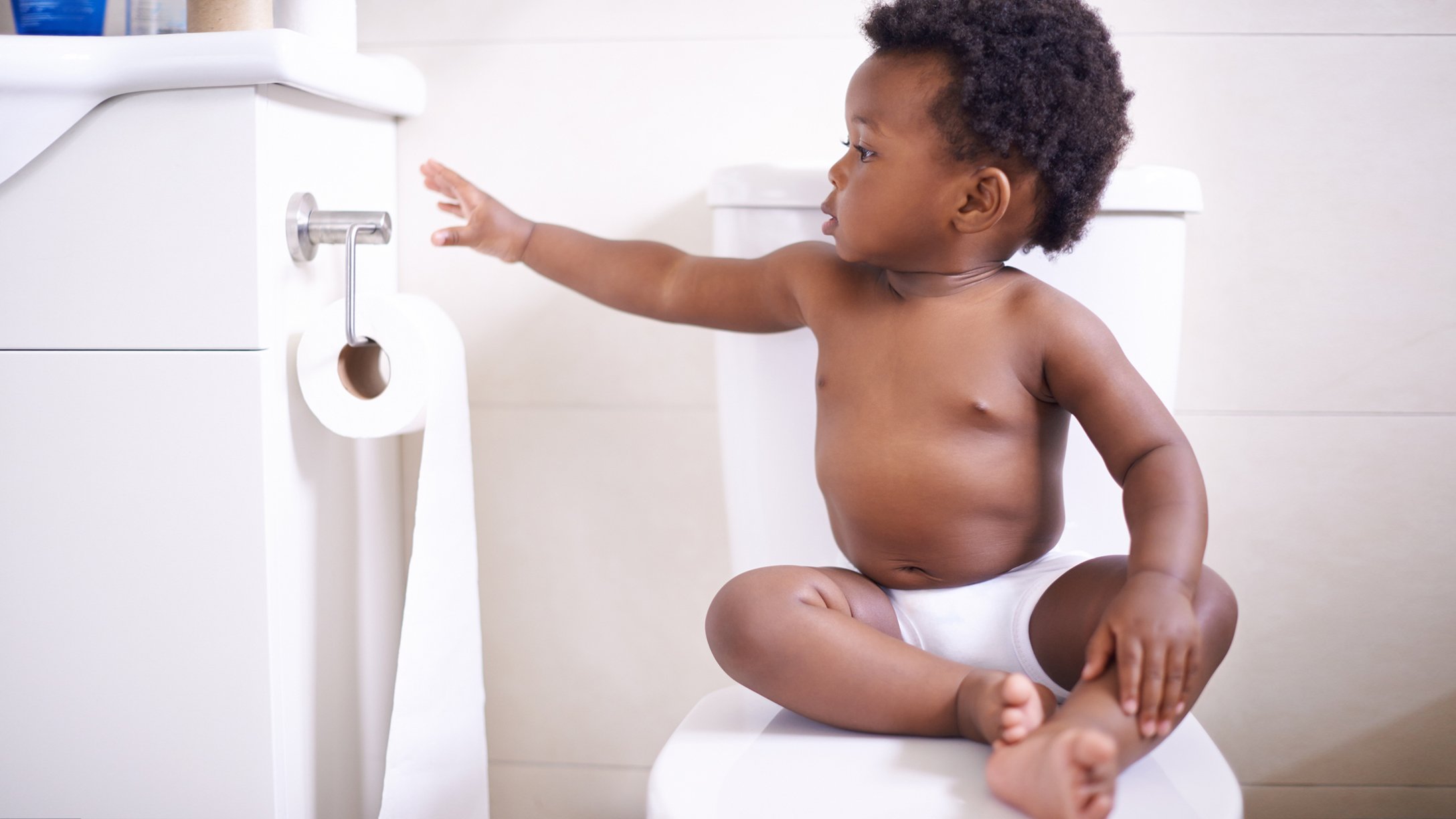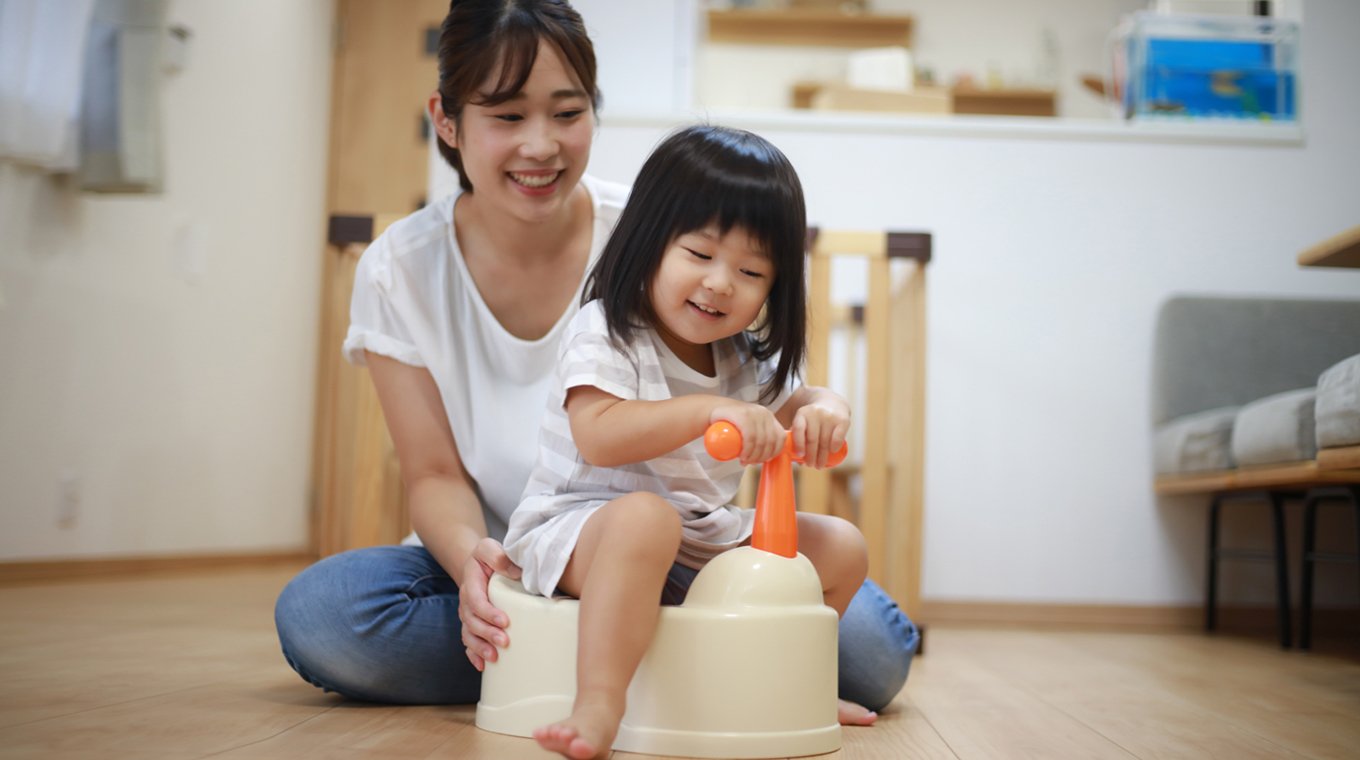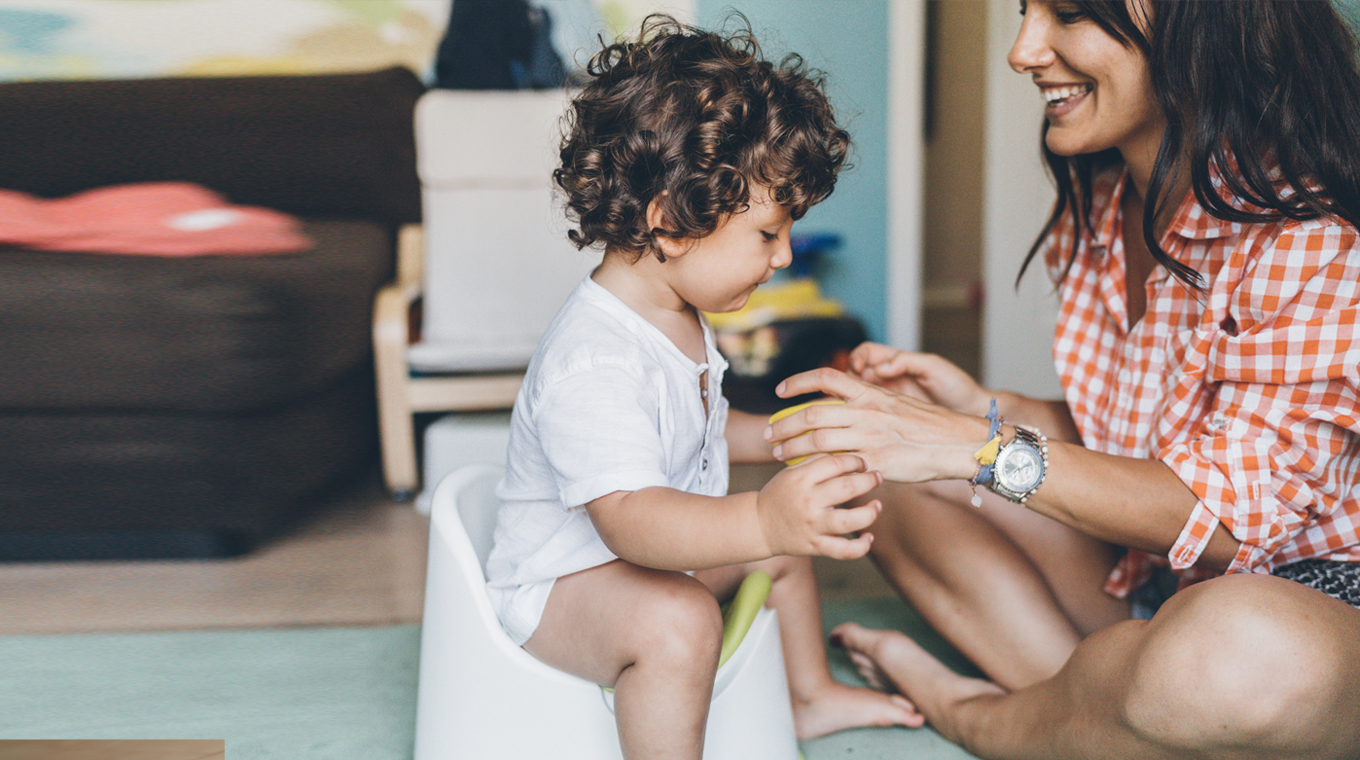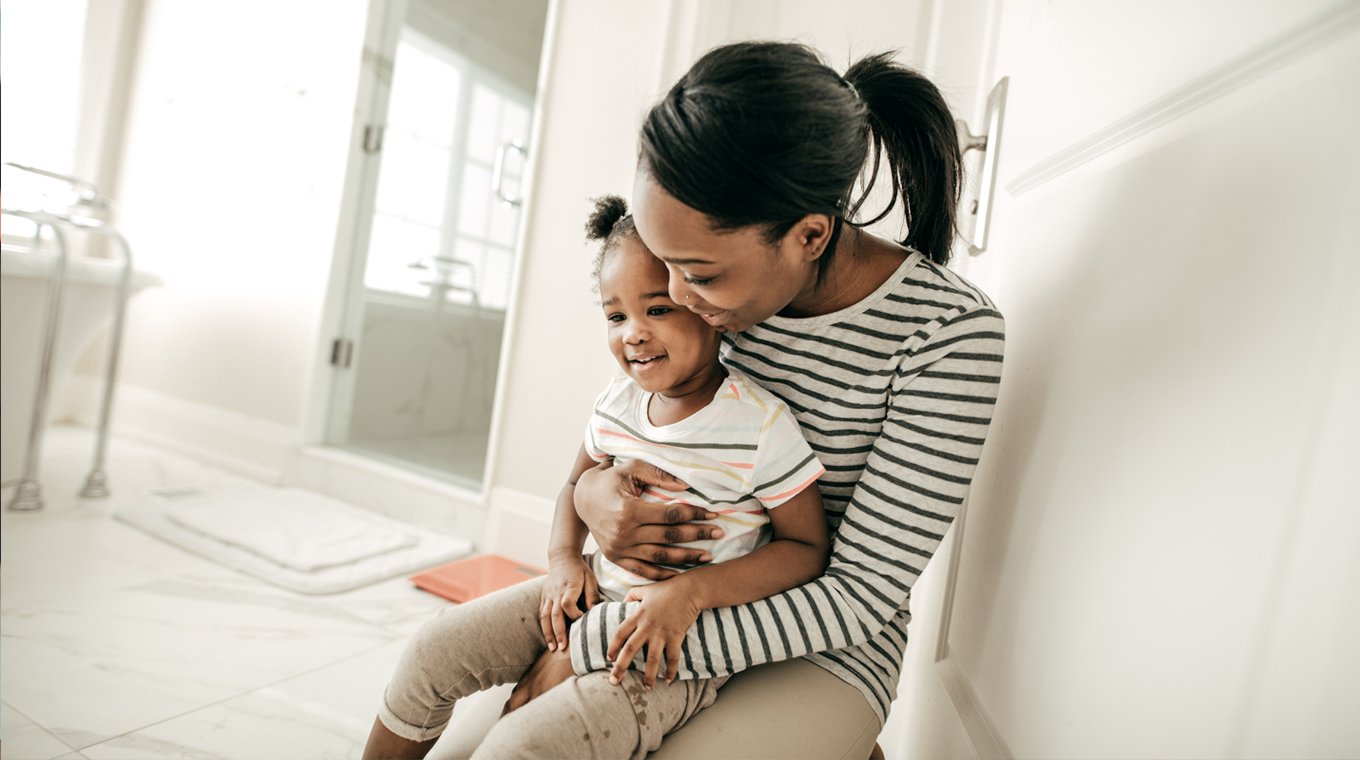
In this article
Baby milestones come at you fast in the early years, and it can be difficult to keep up. One day baby is finally sleeping through the night, and the next they’re yanking off their diaper and running around the house naked. If you’re wondering whether or not it’s time your little streaker began using the toilet, here are some questions to ask yourself and 8 of the best potty training tips to help you decide whether to jump in now or hold off for a bit.
Is it time to begin potty training?

If you’re ready to be done with diapers, there may be signs your toddler is ready for potty training. Every child is different, so these cues may indicate readiness, but they also could be coincidental. So yes, watch for clues but also be patient if it doesn’t happen when you expected.
Here are some things to look for that indicate your little one may be ready to begin potty training:
- Have you noticed dry diapers throughout the day?
If your toddler is remaining dry for two or more hours during the day, they may be ready to begin sitting on the potty periodically. - Does your child hate being in a soiled diaper?
If your toddler is constantly trying to take a dirty diaper off or letting you know that they’re wet, potty training may be the next step. - Does your child follow simple two-part instructions? For example, “Go over to the table and get the book.”
If so, they may be ready to follow the directions necessary for a successful potty training session. - Is your little one showing signs of independence and wanting to do everything on their own?
If you have an adventurous and motivated toddler, especially one who is able to get dressed by themselves, they may be up for the challenge of potty training.
Tried and true potty training tips

The best advice often comes from those who have already been there a time or two. These tried and true potty training tips may be just the thing that makes it click for your child.
1. It’s OK to use outside resources to encourage your child to use the potty. “Stories and games about the potty are helpful, especially if they’re afraid of it,” Meghan Bo told Mom.com. “I kept a stack of books and things to distract my kids so if they had to go, they’d be entertained and not trying to run away in the middle of a stream.”
When my oldest children were potty training over two decades ago, they especially loved the book Once Upon a Potty, which is now almost 50 years old. The original version for boys features Joshua learning how to use the potty. The little girls’ version of Once Upon a Potty, which was written in 1980, follows Prudence in her quest to master potty training. The corresponding VHS, plush doll, and toy potty have stood the test of time and make potty training fun for your little one. I can’t be held responsible for the song getting stuck in your head, though!
2. Be sure that the potty training language you use with your child remains consistent to avoid confusion, misunderstandings, and frustration.
“Even before you start toilet training, you need to decide what potty words you will teach your child to use when talking about going to the bathroom,” Dr. Anna Kaplan wrote for Potty Genius. “There are no right or wrong words. But you must decide what potty words you will use with your child and make sure that everyone who takes care of your little one uses the same words, including family, babysitters, and even preschool teachers.”
3. Consider implementing potty sticker charts for successful trips to the toilet.
Each time your child uses the potty, they accumulate potty training rewards to trade in for a special treat; what that reward is, is up to you and will depend on their interests. Matchbox cars were popular in our house. I would buy them in bulk and use them as an incentive to use the potty.
“Every 15 minutes I would have them sit on the potty. If they used the potty at any of those time increments, we would applaud and reward them,” mom Angie Ravenel told Mom.com about potty training her sons. “I kid you not, they started going to the potty just to get a prize!”
4. Find the right portable potty seat or insert for your child.
It may take some trial and error as there are a variety of potty seats on the market, but choosing the right one can make a difference. If feasible, have your child choose a potty seat featuring their favorite character or color.
5. Give them a little boost to do the deed: Your little one may be a bit nervous on the toilet and have a hard time letting go. To help them a bit and make going number two a bit easier, you can add a probiotic like Seed to their diet.
6. Bonus potty seat tip: Line the bottom of the portable potty with a coffee filter to make cleaning up poop a breeze!
Child-led potty training techniques

Caregivers who are not facing a time crunch to produce a potty-trained child before the first day of preschool or daycare, have some flexibility when it comes to toilet training and may want to implement child-led potty training as a relaxed approach.
6. Be open about what happens in the bathroom.
From the beginning, let your child know what you’re doing when you’re in the bathroom. Explain the process and even let them see you use the toilet.
7. Encourage your toddler to sit on the potty at various times throughout the day.
“Don’t force it. They’ll go when they’re ready,” Bo advised. “When they were ready, consistency was key for us. Even if they didn’t have to go, I would sit them there. Just for a few minutes, ‘just in case.'”
8. Rather than tossing a soiled diaper into the trash or a Diaper Genie, empty it into the toilet.
Empty dirty diapers into the toilet then have your child flush the toilet so they begin to associate going to the bathroom with using the toilet.
Patience is key, and mastering the potty will vary between children. The best thing you can do is remain positive and take it one day at a time.




